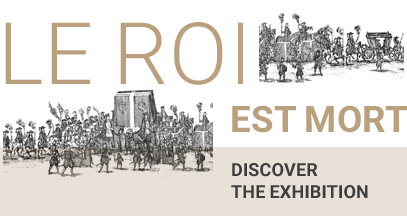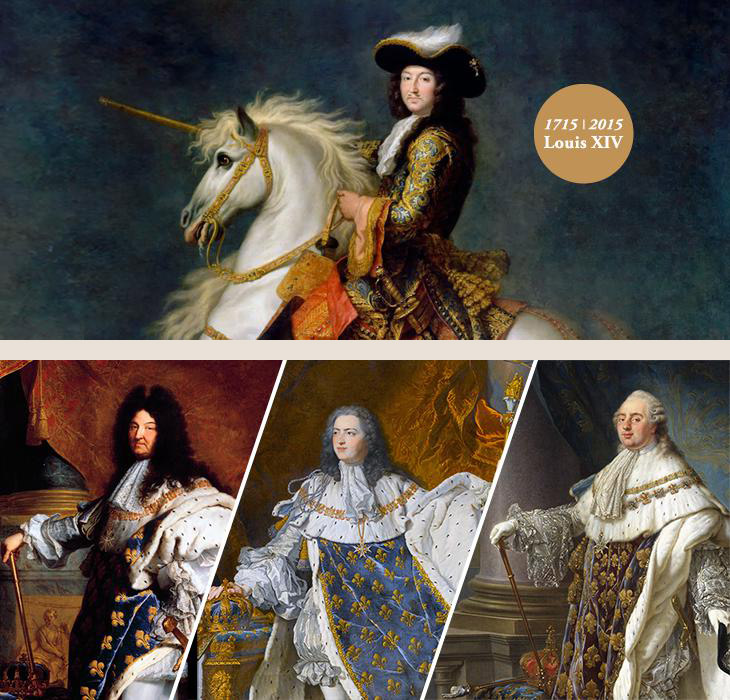Louis XIV at Notre-Dame de Paris
By Jean-Pierre Cartier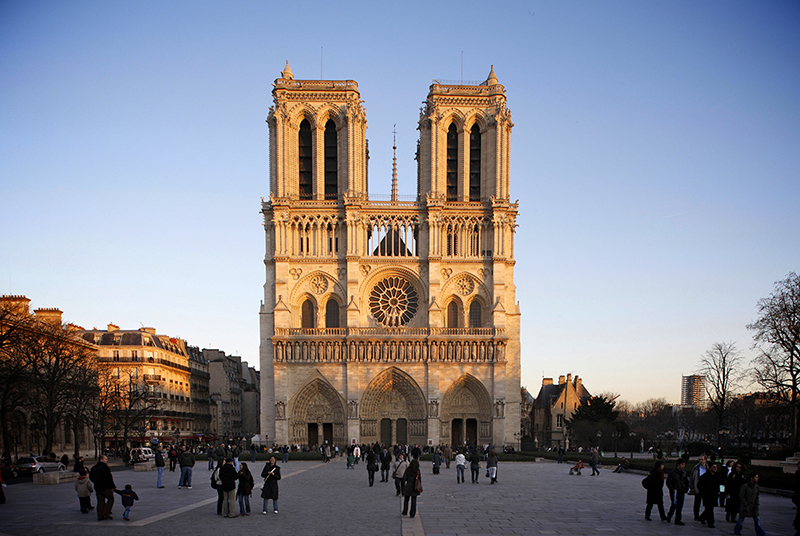
On 10 February 1638, King Louis XIII signed letters patent in Saint-Germain by which he made the famous order whose official publication is entitled “Declaration of the King by which His Majesty declares that he has adopted the very holy and glorious Virgin as the special protectress of his kingdom”. This “vow of Louis XIII” was an almost mystical text, completely imbued with the spirit of the Council of Trent (1545-1563) and the French spirituality of the Counter-Reformation:
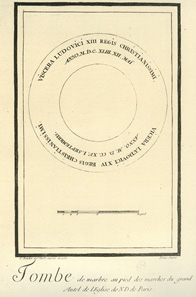
We have declared and declare that, taking the most holy and glorious Virgin as the special protectress of our kingdom, we consecrate to her in a particular way our person, our State, our crown and our subjects, beseeching her to inspire us to behave in a holy manner and to so diligently defend this kingdom against the endeavours of all its enemies that, whether it suffers the plague of war or enjoys the sweetness of peace, we implore God from the depth of our heart, that it may never depart from the path of grace leading to the path of glory.
In promulgating the vow as the fundamental law of the kingdom recorded by the Parliament of Paris, Louis XIII undertook to ensure its continuance throughout the centuries, notably by the installation of a new high altar dedicated to the Virgin in Notre Dame Cathedral, in which she would be depicted holding in her arms the body of her Son descended from the Cross, thus marking the profound connection between the Incarnation and the Redemption.
In 1698, Louis XIV requested Mgr Louis-Antoine de Noailles (1651-1729), Archbishop of Paris between 1695 and 1700, who would be made cardinal in 1700, to study a new embellishment for the cathedral, under the supervision of Jules Hardouin-Mansart, First Architect to the King, in order to fulfil his father’s vow.
The Archbishop of Paris, Mgr de Noailles, surrounded by his chapter, blessed and laid the first stone of the new altar in Notre Dame Cathedral on 7 December 1699.
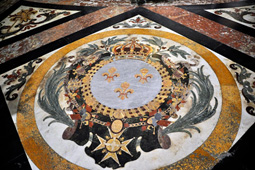 In fact, due to the considerable expenditure incurred in connection with the War of the Spanish Succession (1701-1714), Louis XIV no longer had the financial resources for the works necessary to fulfil the vow. And so, in 1703, the work initially planned was simplified and it was decided to create a high altar located at the bottom of the choir, and in particular to abandon the baldachin initially planned. In 1708, the exceptional donation by Canon Antoine de le Porte, the great benefactor of Notre Dame Cathedral, allowed works to be resumed under the direction of Robert de Cotte, who had become First Architect to the King. The work would last until 1725, but it was sufficiently advanced for the choir to be used for worship on 22 April 1714 on the occasion of the Te Deum sung to celebrate the Treaty of Rastatt.
In fact, due to the considerable expenditure incurred in connection with the War of the Spanish Succession (1701-1714), Louis XIV no longer had the financial resources for the works necessary to fulfil the vow. And so, in 1703, the work initially planned was simplified and it was decided to create a high altar located at the bottom of the choir, and in particular to abandon the baldachin initially planned. In 1708, the exceptional donation by Canon Antoine de le Porte, the great benefactor of Notre Dame Cathedral, allowed works to be resumed under the direction of Robert de Cotte, who had become First Architect to the King. The work would last until 1725, but it was sufficiently advanced for the choir to be used for worship on 22 April 1714 on the occasion of the Te Deum sung to celebrate the Treaty of Rastatt.
Generally speaking, all the decorations were created by the best artists of the era, those who worked in Versailles and in the Royal palaces.
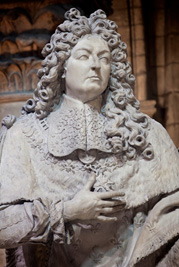 The actual vow was fulfilled by the creation of a very beautiful Baroque group of three statues of excellent quality. In the centre a Virgin of Pity, the work of Nicolas Coustou, depicted Mary at the foot of the Cross in tears before the body of Jesus, expressing a mother’s grief and her total submission to the will of God. On the right, the statue of King Louis XIII can be seen kneeling and handing his crown and sceptre to Mary. This work by Guillaume Coustou, produced in 1715, more or less recapitulates the elements of the famous picture by Philippe de Champaigne. On the other side of the Pietà, a magnificent work by Antoine Coysevox depicts King Louis XIV as a “very Christian” king with his hand on his heart, assuring Mary of his faithfulness. Pierre du Colombier described it as “one of the most powerful images of the King in recent years, a little fleshy, divesting himself of his splendour before God”.
The actual vow was fulfilled by the creation of a very beautiful Baroque group of three statues of excellent quality. In the centre a Virgin of Pity, the work of Nicolas Coustou, depicted Mary at the foot of the Cross in tears before the body of Jesus, expressing a mother’s grief and her total submission to the will of God. On the right, the statue of King Louis XIII can be seen kneeling and handing his crown and sceptre to Mary. This work by Guillaume Coustou, produced in 1715, more or less recapitulates the elements of the famous picture by Philippe de Champaigne. On the other side of the Pietà, a magnificent work by Antoine Coysevox depicts King Louis XIV as a “very Christian” king with his hand on his heart, assuring Mary of his faithfulness. Pierre du Colombier described it as “one of the most powerful images of the King in recent years, a little fleshy, divesting himself of his splendour before God”.
By Jean-Pierre Cartier, born in 1944, combine of history and geography, emeritus professor at Lycée Hoche of Versailles. Member of the CaSa association, he worked in several monographs on the Notre Dame Cathedral. Currently, he performs the master function of the ceremonies of the cathedral.







